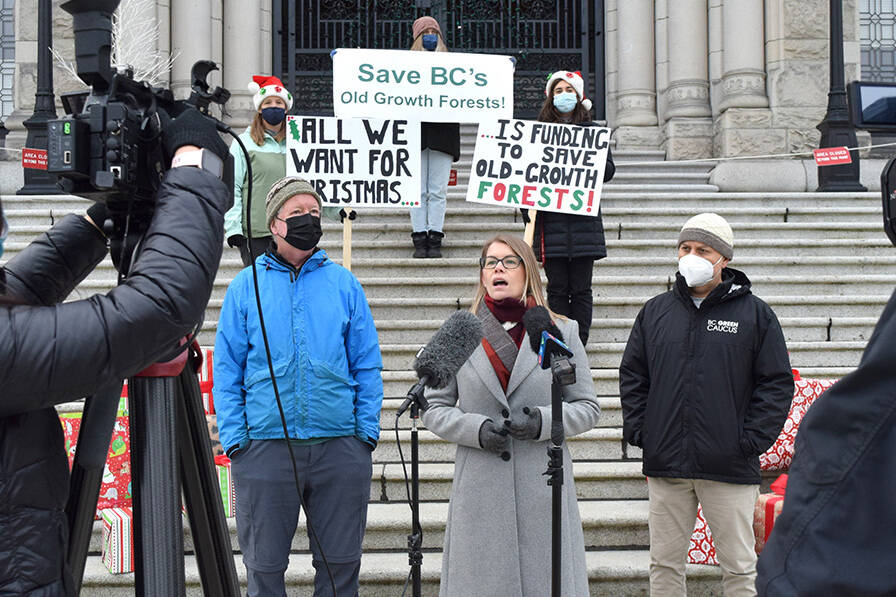In one of the last acts in a year that saw the province reel over old-growth logging, local politicians and the Ancient Forest Alliance members demanded the 2022 B.C. budget include funding for First Nations to develop new systems for forest management.
Forest ecologist, Metchosin council member and former Green Party of B.C. candidate Andy MacKinnon told the modest press gathering at the steps of the legislature that he worked five years with the provincial government, developing land-use plans for the Haida Gwaii archipelago and the Great Bear Rainforest.
“Both involved new approaches to land use and forest management,” he said. “But they also both involved the provision of funding, from multiple sources, that allowed communities to make free and responsible choices.” Without it, he said, “the choice that’s been given to nations and small communities around British Columbia is ‘you can log these old-growth forests and generate revenue and employment, or you cannot and have neither.’”
SEE ALSO: VIDEO: Fairy Creek protesters, Indigenous supporters mark one year of blockades
The provincial funding appeal was made following the federal government’s commitment of $2.3 billion to expand Canada’s protected areas – “The greatest investment in conservation in Canada’s history,” said Forest Alliance campaigner Andrea Inness – and the province’s deferral of logging in 2.6 million hectares of old-growth forest (equivalent to 6,400 Stanley Parks) last November.
Were the province to provide relatively equivalent funding in the range of $300 million, the deferred forest lands could draw revenue from ecotourism, sustainable freshwater or ocean fisheries or renewable energy projects, Inness said.
Carbon sequestration – the practice of investing in natural resources that eliminate carbon to offset the investor’s own carbon emissions – could be another worthy revenue stream with proper consultation funding, MacKinnon said. “Large companies around the world are pledging to go carbon neutral, and the only possible way of doing that is by maintaining forest areas.”
READ ALSO: UVic, U-Calgary researchers investigate possibility of CO2 storage in ocean basalt
Each could provide First Nations with a desperately needed “third option” for generating revenue and employment in the absence of old-growth logging, MacKinnon said. In B.C. alone, over 5,300 Indigenous people are directly employed in the forest industry, which provides $250 million in economic benefit to their communities, according to a 2019 study by the Council of Forest Industries.
“We’re here to demand that the provincial government step up (so that) First Nations are not left in the centre of the B.C. NDP’s failed forestry – that’s exactly where they’ve put them over the last number of months,” said Adam Olsen, Green Party MLA for Saanich and the Islands.
“If you look at the money they’ve put on the table for Indigenous nations over the last three years … $80,000 is not enough to do the technical work. It’s disrespectful, frankly.”
“Premier Horgan knows what to do,” Inness said. “On budget day, we’ll find out whether the province’s intentions are naughty or nice.”
Do you have a story tip? Email: kiernan.green@blackpress.ca.
Follow us on Twitter and Instagram, and like us on Facebook.

